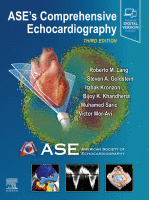Physical Address
304 North Cardinal St.
Dorchester Center, MA 02124

Aortic regurgitation (AR) may lead to serious morbidity and excess mortality. As noted in the preceding chapters, the diagnosis of AR should be based on the guidelines for native valvular regurgitation by the American Society of Echocardiography and other international…

Aortic regurgitation (AR), either acute or chronic, can be caused by valvular pathology, aortic root pathology, or a combination of the two. In developed countries, chronic isolated AR is predominantly caused by aortic root disease or congenital aortic valve disease,…

Aortic regurgitation (AR) results from reflux of blood from the aorta into the left ventricle during diastole, caused by aortic valve or aortic root disease. The pathophysiology of AR depends whether the AR is acute or chronic. Acute AR is…

Anatomy of the Aortic Valve The aortic valve is a semilunar valve, which typically has three cusps that are attached to the aortic wall to form the sinuses of Valsalva. The highest point of attachment at the leaflet commissures defines…

Epidemiology Subaortic stenosis (SAS) is rarely found in infants and is responsible for 10% of cases of left ventricular outflow (LVOT) obstruction in children. Although it can be diagnosed at any age, the most common presentation is in the first…

Acknowledgment The authors acknowledge the contributions of Dr. Patrizio Lancellotti, who was the author of this chapter in the previous edition. According to the guidelines, there are four stages of aortic stenosis (AS), which are differentiated by valve anatomy, hemodynamics,…

Low-flow, low-gradient (LF-LG) aortic stenosis (AS) is characterized by a small aortic valve area (AVA<1.0 cm 2 ), a low gradient (mean <40 mm Hg), and a low-flow state (stroke volume index [SVI] <35 mL/m 2 ). The LF-LG AS…

Low-flow, low-gradient (LF-LG) aortic stenosis (AS) with reduced left ventricular ejection fraction (LVEF) occurs in approximately 5% to 10% of patients with AS. This entity is characterized by a small aortic valve area (AVA) compatible with severe AS (i.e., ≤1.0…

Echocardiography plays a pivotal role in decision making in patients with aortic stenosis (AS) and contributes to decision making for aortic valve replacement (AVR), as guided by the 2014 American Heart Association (AHA)/American College of Cardiology (ACC) Guideline for the…

Acknowledgment The authors acknowledge the contributions of Dr. Smith, who was the author of this chapter in the previous edition. Aortic stenosis (AS) is the most commonly encountered valvular degenerative pathology in the world, affecting between 2% and 5% of…